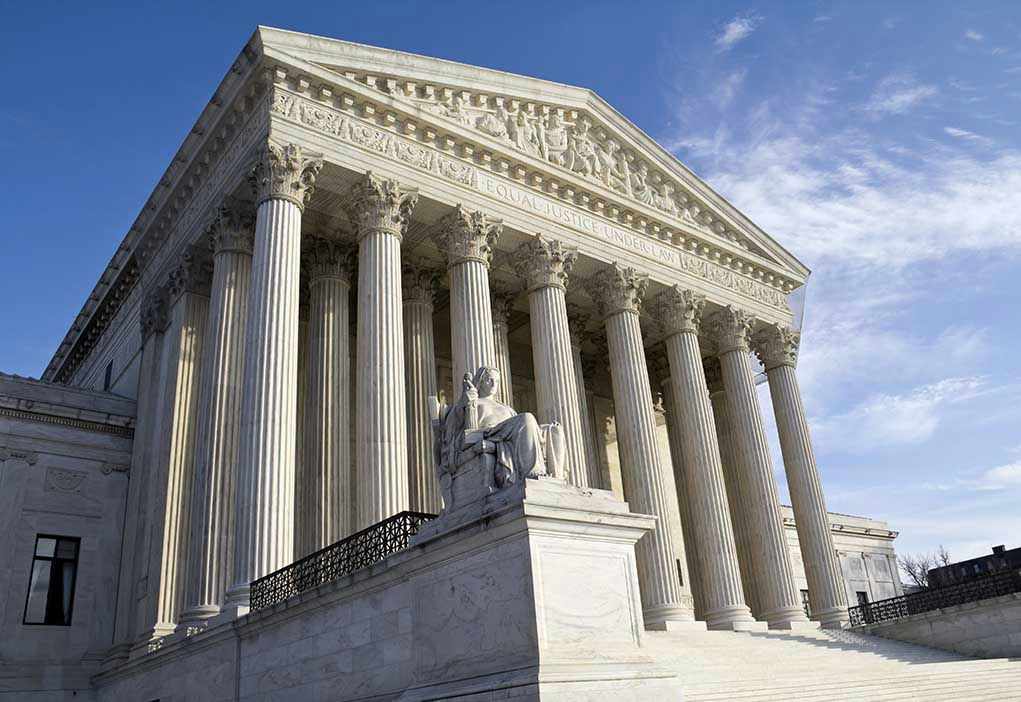
Trump’s sweeping use of emergency powers to impose nationwide import tariffs now faces a Supreme Court showdown that could redefine executive authority and America’s economic sovereignty.
Story Snapshot
- President Trump declared a national emergency to justify broad new import tariffs, invoking unprecedented executive powers.
- The Supreme Court will determine whether the International Emergency Economic Powers Act (IEEPA) permits such tariff actions.
- Tariffs target nearly all imports and specifically crack down on low-value Chinese goods, aiming to protect American jobs and security.
- Critics warn of economic fallout, supply chain disruptions, and challenge the legality of bypassing Congress in trade matters.
Trump’s Emergency Tariffs: A First in Presidential Power
President Donald Trump declared a national emergency citing the persistent U.S. trade deficit, unveiling the so-called “Liberation Day tariffs.” These measures included a baseline 10% tariff on almost all imports and a targeted end to the de minimis exemption for low-value Chinese goods. The administration justified these sweeping actions using the International Emergency Economic Powers Act (IEEPA), marking the first time this statute was used not for financial sanctions, but to impose broad import tariffs. This bold use of executive authority has sparked both acclaim and legal scrutiny, especially among those concerned about constitutional checks and balances.
Historically, U.S. presidents relied on Section 301 of the Trade Act of 1974 or Section 232 of the Trade Expansion Act of 1962 for tariff actions, rarely invoking emergency statutes. The Trump administration’s move stands apart by framing the trade deficit itself as a national emergency—an interpretation not previously recognized under IEEPA or its predecessors. This approach draws on the example of President Nixon’s 1971 import surcharge, but Trump’s orders go much further in both scope and legal justification. The return to economic nationalism, fueled by concerns over supply chain security and foreign manufacturing dominance, resonates deeply with Americans who feel past globalist policies eroded domestic industry and jobs.
Stakeholders and the Coming Supreme Court Battle
The core decision-makers in this saga are President Trump and his senior advisors, who wield significant unilateral power under IEEPA. The U.S. Department of Commerce and the U.S. Trade Representative play key implementation roles, while foreign governments—especially China, the EU, and North American partners—find themselves targeted by higher tariffs. Many U.S. business groups and importers oppose these measures, citing increased costs and the risk of international retaliation. American manufacturers and some labor unions, however, welcome the prospect of reshoring jobs and restoring industrial strength. Notably, Congress has limited direct oversight, raising alarms about the erosion of its constitutional role in matters of trade and taxation.
The Supreme Court’s review centers on whether the president’s emergency powers under IEEPA extend to imposing tariffs so broadly, or if such authority belongs exclusively to Congress. Legal scholars and industry analysts warn that upholding this use of IEEPA could permanently shift the balance of power, making it easier for future presidents—regardless of party—to bypass legislative checks and unilaterally reshape economic policy. For defenders of the Constitution, this is a critical moment to safeguard separation of powers and prevent executive overreach.
Economic Impact and Political Ramifications
Since their implementation, the tariffs have raised import costs, disrupted supply chains, and fueled higher consumer prices—effects felt most acutely by low-income households and import-dependent sectors like electronics and retail. While the administration argues these measures will boost manufacturing and national security, many economists caution that the broad tariffs act as a tax on Americans and risk sparking global trade wars. Some sectors, such as pharmaceuticals and critical minerals, have received exemptions to protect national interests. Meanwhile, ongoing trade negotiations and retaliatory threats from abroad create uncertainty for exporters and complicate diplomatic relationships.
Supreme Court to weigh in on Trump’s emergency tariff powers after prez unleashed sweeping levies https://t.co/9dlAFIP7fQ pic.twitter.com/6MFDgVfqC3
— New York Post (@nypost) September 9, 2025
Supporters of the tariffs frame them as necessary self-defense against unfair foreign practices, asserting America’s right to control its economic destiny. Critics, however, stress that bypassing Congress in imposing such sweeping duties opens the door to future abuses of emergency authority. The Supreme Court’s decision will not only determine the fate of the “Liberation Day tariffs,” but also set a precedent for how far any president can go in invoking emergencies to reshape the nation’s laws and economy—an outcome with lasting consequences for American sovereignty, constitutional order, and the principle of limited government.
Sources:
Wikipedia: Liberation Day tariffs
White House Fact Sheet (April 2025)
Atlantic Council: Trump Tariff Tracker
White House Fact Sheet (September 2025)
Trade Compliance Resource Hub: Trump 2.0 Tariff Tracker












